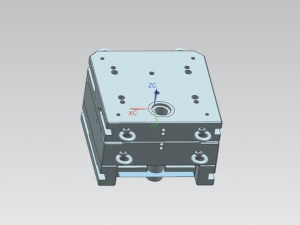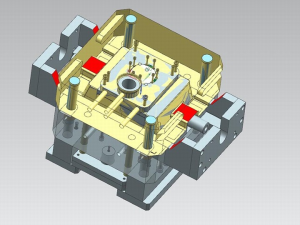There are many types of stamping and trimming dies. According to the complexity of the parts, the content of the trimming process is also very different. The pros and cons of the trimming process design directly affect the feasibility of trimming the stamping parts, trimming quality and production efficiency.
Design of edge trimming punching force and blank holding force
The design of process force provides a reference for the selection of stamping equipment. The calculation formula is as follows: where Ps=Ts90 percentage Lt, Ps is the cutting force or punching force; Ts is the tensile strength of the material; L is the length of the cutting force; t is the thickness of the workpiece. For example: the tensile strength of a certain material is 314, the shear length is 1000mm, and the thickness of the workpiece is 0.7mm. According to the formula: Ps=(2700.9) 10000.7=170100N, the pressure calculation formula is: where P= PsK, K is the pressure coefficient. Generally, the stamping part K is 7 percent, and the appearance covering part K is 10 percent. When the compression force calculation does not meet the requirements, that is, the compression is not tight, and the parts will have quality defects such as camber and burrs.
Design of trimming and punching conditions
When trimming the inclined surface of the workpiece, the maximum inclination angle of the inclined surface should meet the standards in Figure 2 and Table 1. When the trimming inclined surface does not meet the above inclination angle, wedge trimming is not used, the workpiece is obviously sheared and pulled, and the stamping parts will produce burrs and other defects. When punching the inclined surface of the dangerous workpiece, the limit angle of punching should meet the standards in Figure 3 and Table 2. If the limit angle of punching does not meet the requirements, the punching quality of the punching parts is difficult to guarantee, and it is easy to produce punching burrs. Poor quality problems. In the actual design process, when θgt; 15 degrees, wedge punching should be used in principle.





